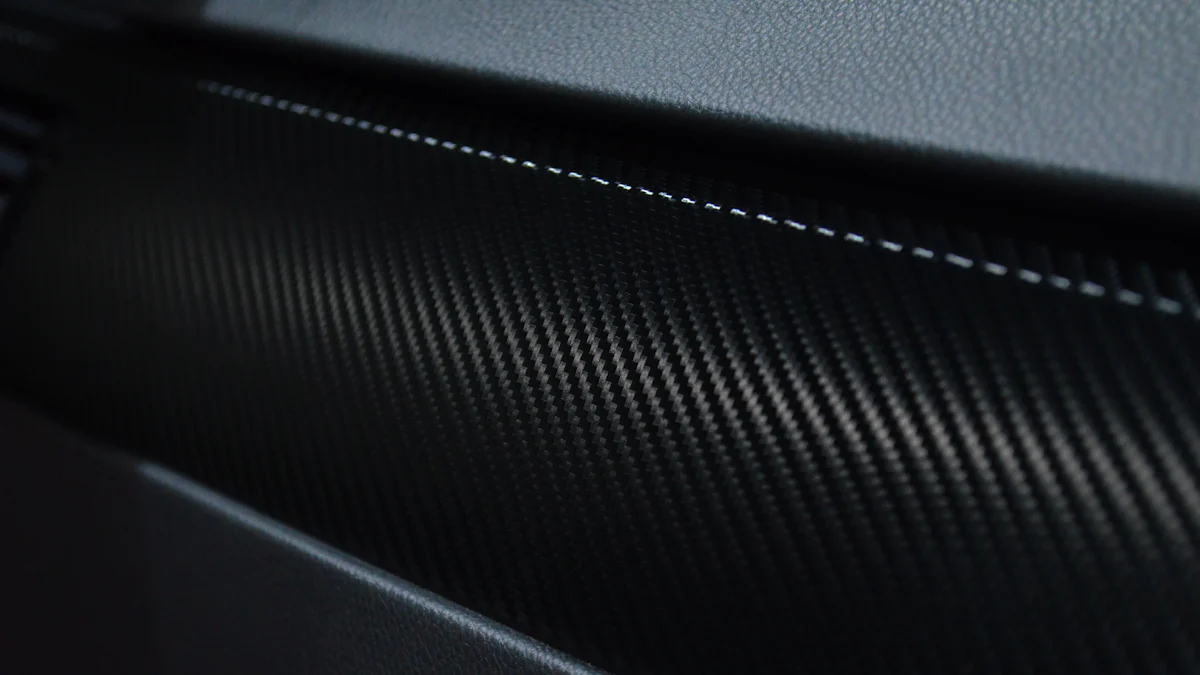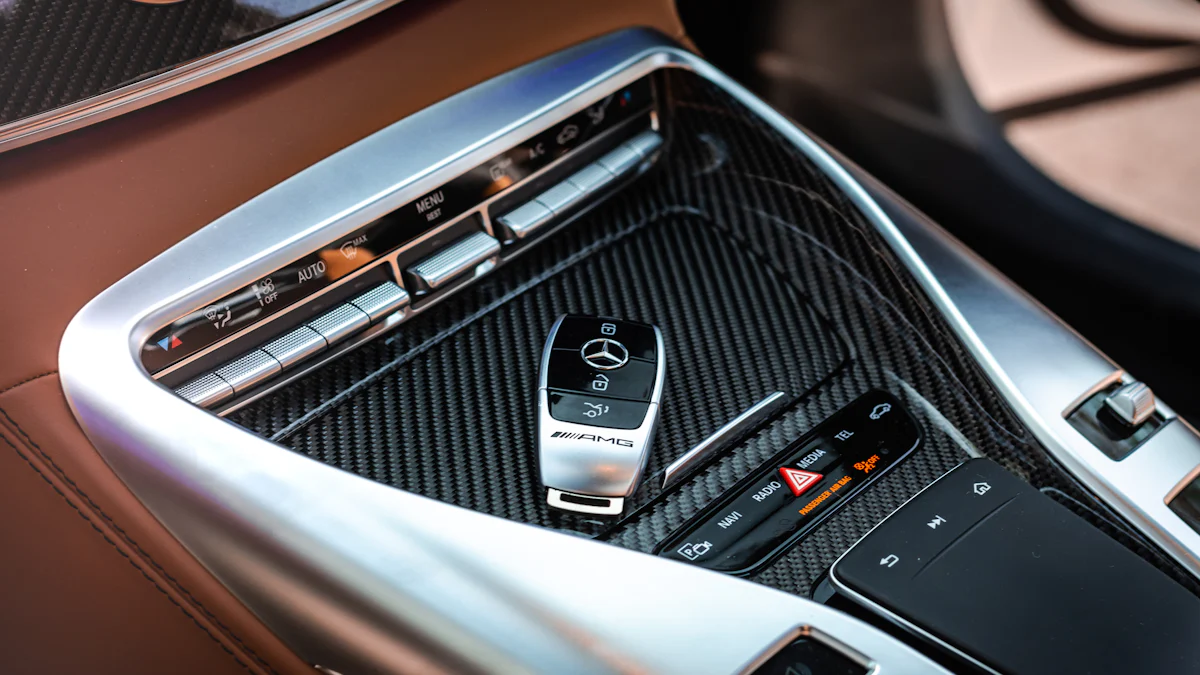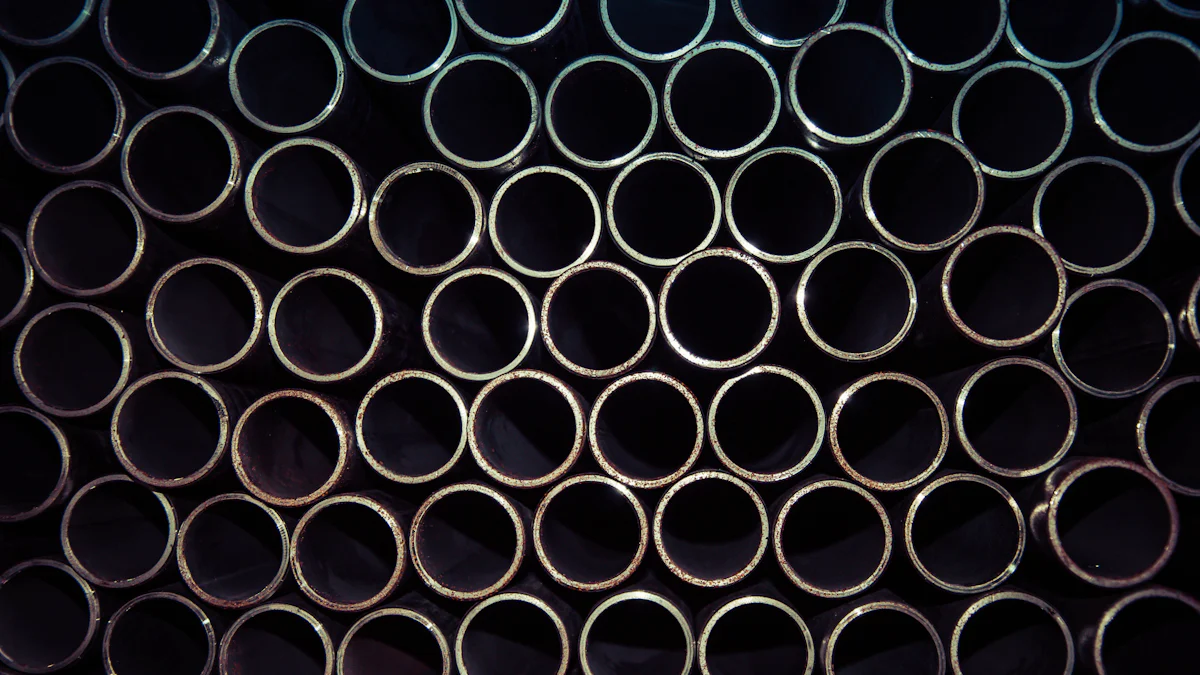
When comparing carbon fiber vs titanium, I see two materials that revolutionize modern industries. Their unique properties make them indispensable in fields where strength, weight, and durability are paramount.
- In aerospace, carbon fiber’s lightweight nature enhances aircraft efficiency, while titanium withstands extreme temperatures in engine parts.
- Automotive manufacturers rely on carbon fiber for fuel efficiency and titanium for robust exhaust systems.
- In sports, carbon fiber dominates gear design, and titanium elevates performance in golf clubs and bicycles.
These materials redefine innovation across sectors.
Key Takeaways
- Carbon fiber is very light and great for reducing weight. It is used in airplanes and sports gear.
- Titanium is very strong and lasts long. It works well for tough uses like medical tools and airplane parts.
- To pick one, think about weight, price, and how you’ll use it.
Overview of Carbon Fiber and Titanium
Defining Carbon Fiber
Carbon fiber is a material composed of thin, strong crystalline filaments of carbon atoms. I find it fascinating that its strength comes from the alignment of these atoms in a parallel structure. Manufacturers typically produce carbon fiber by heating precursor materials like polyacrylonitrile (PAN) in the absence of oxygen. This process creates a lightweight yet incredibly strong material. Historically, carbon fiber’s journey began in 1860 when Sir Joseph Wilson Swan used it in light bulbs. By the 1960s, advancements in manufacturing made it more accessible, revolutionizing industries like aerospace and automotive.
Defining Titanium
Titanium, a metallic element, is renowned for its exceptional strength and corrosion resistance. Discovered in 1791 by William Gregor, it remained underutilized until the 20th century. The Kroll process, developed in the 1930s, enabled large-scale production, making titanium a staple in modern industries. I admire its versatility, as it combines the strength of steel with a fraction of the weight. Its biocompatibility also makes it invaluable in medical applications like implants.
Key Properties of Carbon Fiber
Carbon fiber stands out due to its unique characteristics:
- High strength-to-weight ratio ensures superior performance with minimal weight.
- Exceptional stiffness allows it to withstand significant forces without bending.
- Low thermal expansion maintains its shape under temperature changes.
- Corrosion resistance ensures durability in harsh environments.
- High fatigue resistance supports long-term use under repetitive stress.
Key Properties of Titanium
Titanium’s properties make it indispensable in demanding applications:
- High strength-to-weight ratio provides robust performance without excessive bulk.
- Exceptional corrosion resistance ensures longevity, even in saltwater or chemical exposure.
- Biocompatibility makes it ideal for medical implants and devices.
- High melting point allows it to perform well in extreme temperatures.
- Non-magnetic nature makes it suitable for specialized equipment.
Both materials excel in their respective domains, but their unique properties highlight why the “Carbon fiber vs titanium” debate continues to captivate engineers and designers.
Carbon Fiber vs Titanium: Comparative Analysis
Strength and Durability
When I compare the strength and durability of carbon fiber vs titanium, I notice both materials excel in different ways. Carbon fiber offers exceptional resistance to wear and fatigue, making it ideal for applications requiring long-term performance under repetitive stress. Titanium, on the other hand, resists wear, corrosion, and fatigue, even in extreme environments.
| Material | Durability | Maintenance Requirements |
|---|---|---|
| Carbon Fiber | Excellent resistance to wear and fatigue | Regular cleaning with mild detergent; avoid harsh chemicals and UV light |
| Titanium | Resistant to wear, corrosion, and fatigue | Minimal maintenance required; polish scratches and grooves out |
In aerospace, carbon fiber strengthens fuselage components, while titanium reinforces landing gear. In sports, carbon fiber dominates bicycle frames, whereas titanium enhances golf clubs. Each material’s durability depends on its application.
Weight and Density
Weight plays a critical role in industries like aerospace and automotive. Carbon fiber is significantly lighter than titanium, with a density of 1.75 g/cm³ compared to titanium’s 4.5 g/cm³. This weight difference makes carbon fiber the preferred choice for applications where reducing mass is essential.
| Material | Density (g/cm³) |
|---|---|
| Carbon Fiber | 1.75 |
| Titanium | 4.5 |
Despite its higher density, titanium’s strength-to-weight ratio remains impressive. I find it fascinating how both materials balance weight and strength differently to meet specific needs.
Cost and Affordability
Cost often determines material selection. Carbon fiber is generally more expensive, with prices ranging from 10−10-10−30 per pound, while titanium costs 5−5-5−20 per pound. Carbon fiber’s high price stems from its complex manufacturing process and specialized machinery. Titanium, though cheaper, still requires significant resources due to its high melting point.
| Material | Average Price Range ($ per pound) |
|---|---|
| Carbon Fiber | 10−10-10−30 |
| Titanium | 5−5-5−20 |
While carbon fiber offers greater design flexibility, titanium’s affordability makes it more accessible for many industries.
Environmental Impact
Environmental considerations are increasingly important. Carbon fiber production generates less pollution and offers better disposal options. Titanium, however, has a more significant environmental footprint due to its energy-intensive production process and non-degradable nature.
- Titanium production generates significant pollution and is non-degradable.
- Carbon fiber has lower pollution levels during production and better disposal options.
I believe sustainability will play a larger role in material selection as industries strive to reduce their environmental impact.
Applications of Carbon Fiber vs Titanium

Aerospace and Aviation
In aerospace, I see carbon fiber revolutionizing aircraft design. Its high strength-to-weight ratio makes it ideal for components like wings, fuselage structures, and even engines. By significantly reducing aircraft weight, carbon fiber enhances fuel efficiency and overall performance, which are critical in aviation. Titanium, however, plays a vital role in areas requiring extreme durability and heat resistance, such as engine parts and landing gear. While both materials excel, carbon fiber often takes precedence in structural applications due to its lightweight nature and exceptional stiffness.
Automotive Industry
The automotive industry benefits from both materials, but their applications differ. Carbon fiber is preferred for lightweight body panels and structural components, improving fuel efficiency and vehicle performance. Titanium, with its superior strength and corrosion resistance, is commonly used in exhaust systems and engine components.
| Aspect | Carbon Fiber | Titanium |
|---|---|---|
| Material Cost | $200-300 per kg | $10-20 per kg |
| Processing Costs | Complex processes required | High-temperature processing |
| Performance Cost | High strength, light weight | High strength, low density |
| Production Scale | Smaller scale, higher cost | Larger scale, more cost-effective |
| Maintenance Costs | Simple maintenance | Requires meticulous care |
| Environmental Protection | Improves fuel efficiency | Pollution during production |
I find that carbon fiber dominates in high-performance vehicles, while titanium remains a cost-effective choice for durability-focused applications.
Sports and Recreation
Carbon fiber has transformed sports equipment. Its exceptional strength-to-weight ratio, high stiffness, and design flexibility make it the material of choice for bicycles, tennis rackets, and fishing rods. It also offers excellent corrosion resistance and dimensional stability, ensuring long-lasting performance. Titanium, on the other hand, shines in golf clubs and premium bicycle frames, where its strength and resilience enhance performance. Both materials elevate athletic gear, but carbon fiber often leads in lightweight applications.
Medical and Industrial Uses
Titanium’s biocompatibility and corrosion resistance make it indispensable in medical implants and devices. Its high melting point and strength-to-weight ratio also suit industrial applications like chemical processing and marine environments. Carbon fiber, while less common in medical uses, excels in prosthetics and lightweight industrial components. I see titanium as the go-to material for critical medical and industrial needs, while carbon fiber thrives in specialized, lightweight designs.
Advantages and Disadvantages of Carbon Fiber vs Titanium

Advantages of Carbon Fiber
Carbon fiber offers remarkable benefits in industries where performance and efficiency are critical. Its exceptional strength-to-weight ratio surpasses most metals, providing significant structural integrity without adding unnecessary weight. This makes it indispensable in aerospace and automotive applications. I also appreciate its corrosion resistance, which ensures durability in harsh environments. For example, carbon fiber rods remain immune to degradation caused by moisture or environmental elements, making them ideal for marine structures and outdoor applications. Additionally, its low maintenance requirements save time and resources over the long term.
Disadvantages of Carbon Fiber
Despite its advantages, carbon fiber has notable drawbacks. Its brittleness can complicate machining and lead to sudden failure under stress, unlike metals that deform before breaking. The high production cost, driven by expensive materials and labor-intensive manufacturing processes, limits its accessibility. Recycling carbon fiber also presents challenges, as the material is difficult to repurpose.
| Disadvantage | Description |
|---|---|
| Brittleness | Carbon fiber reinforced composites are brittle and can break easily, complicating machining. |
| High Cost | The production of carbon fibers is expensive, and the manufacturing process is labor-intensive. |
| Recycling Challenges | There are difficulties associated with recycling carbon fiber materials. |
Advantages of Titanium
Titanium excels in durability and biocompatibility. Its strength and corrosion resistance make it suitable for demanding environments, such as marine and industrial applications. In medical fields, titanium has been used in dental implants since the 1960s, with a success rate of approximately 95%. Its ability to integrate with bone ensures stability, while its biocompatibility minimizes the risk of rejection or allergic reactions. I find its long-term reliability in both medical and industrial uses impressive.
Disadvantages of Titanium
Titanium’s high cost remains a significant barrier. The extraction and processing require substantial resources, making it less viable for cost-sensitive industries like automotive. Manufacturing challenges, including complex and expensive production processes, further hinder its widespread application. Although technologies exist to reduce costs, they are not yet widely adopted, limiting the availability of affordable titanium.
- High cost due to expensive extraction and processing.
- Complex production processes increase manufacturing expenses.
- Limited availability of low-cost technologies restricts affordability.
Choosing Between Carbon Fiber and Titanium
Based on Strength and Weight
When deciding between carbon fiber and titanium, I always consider strength and weight as critical factors. Each material offers unique advantages:
- Carbon fiber is lighter and boasts an exceptional strength-to-weight ratio. This makes it ideal for weight-sensitive applications like aerospace fuselage components or high-performance sports equipment.
- Titanium, while heavier, provides unmatched strength and durability. It excels in high-stress environments, such as landing gear or turbine engine blades.
Weight plays a pivotal role in industries like aviation and automotive. Carbon fiber’s lightweight properties enhance fuel efficiency and performance. Titanium’s low density and superior strength make it indispensable for applications requiring wear resistance and structural integrity.
Based on Budget
Budget constraints often influence material selection. I find that carbon fiber is generally more expensive than titanium due to its complex manufacturing process and raw materials.
- Carbon fiber’s high cost stems from its intricate production methods, making it less accessible for cost-sensitive projects.
- Titanium, while more affordable than carbon fiber, remains pricier than common metals like steel or aluminum.
The price difference varies depending on specific applications. For instance, carbon fiber dominates in high-performance vehicles despite its cost, while titanium offers a more budget-friendly option for durable exhaust systems.
Based on Durability and Use Case
Durability and specific use cases also guide material choice. Carbon fiber’s lightweight nature and design flexibility suit applications where weight is a priority. Titanium’s strength and resistance to wear, corrosion, and extreme temperatures make it ideal for demanding environments.
| Applications | Carbon Fiber | Titanium |
|---|---|---|
| Aerospace | Fuselage components, engine parts | Landing gear, turbine engine blades |
| Automotive | Vehicle frames, body components | Exhaust systems |
| Sports Equipment | Bicycle frames, tennis rackets | Golf clubs, bicycle parts |
| Medical Devices | Prosthetics, surgical instruments | Orthopedic implants, dental implants |
I always recommend evaluating a project’s specific requirements. Carbon fiber excels at lightweight designs, while titanium remains the superior choice for strength and longevity.
Choosing between carbon fiber and titanium depends on specific priorities. Each material offers unique advantages:
- Weight: Carbon fiber is lighter, ideal for weight-sensitive applications.
- Strength: Titanium provides superior durability, excelling in rugged environments.
- Cost: Carbon fiber is pricier but offers design flexibility.
- Durability: Titanium withstands extreme temperatures and corrosion.
I recommend evaluating your project’s requirements, such as weight, budget, and durability. For lightweight designs, carbon fiber excels. For strength and longevity, titanium remains unmatched. Carefully consider their applications and maintenance needs to make an informed decision.
FAQ
What is the main difference between carbon fiber and titanium?
Carbon fiber is lighter and excels in weight-sensitive applications. Titanium offers superior durability and performs well in extreme conditions like high temperatures or corrosive environments.
Can carbon fiber and titanium be recycled?
Titanium is recyclable and retains its properties after recycling. Carbon fiber recycling is challenging due to its composite nature, but advancements are improving its recyclability.
Which material is better for sports equipment?
Carbon fiber dominates lightweight sports gear like bicycles and tennis rackets. Titanium enhances durability in golf clubs and premium bicycle frames, making it ideal for high-impact activities.

